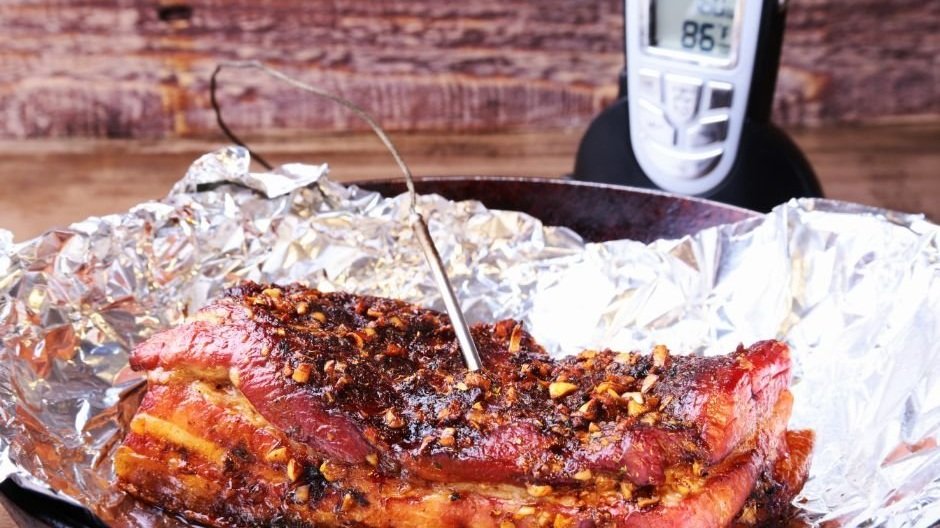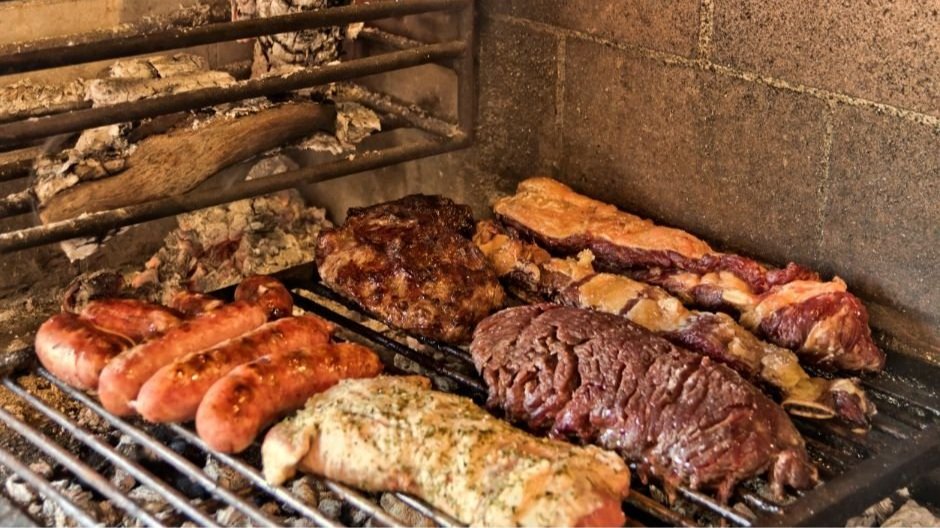The Science of BBQ
A Closer Look
Discover > BBQ at Home > The Science of BBQ
BBQ, an age-old culinary art, is more than just a cooking method; it's a fascinating blend of science and craftsmanship. From cooking meat to smoking techniques, the science behind BBQ plays a crucial role in creating mouthwatering flavors and tender, succulent textures.
In this article, we delve into the world of BBQ, exploring the many variables behind grilling, smoking, and the secrets that make BBQ a beloved culinary tradition. Join us on this journey as we unravel the mysteries and unlock the science behind the art of BBQ.
Cooking Meat: The Foundation of BBQ
Putting the meat to the fire may be simple when looking at BBQ in-general but there’s actually more to it than sizzling meats on the grill.
A know-how of basic meat science and how it reacts to high temperatures is a-must when taking up this centuries old cooking method. Take a look at the different factors that you can control when grilling meats to make that perfect lip-smacking delicious Sunday BBQ.
Meat Fibers and the Maillard Reaction
At the heart of BBQ lies the transformation of meat through the application of heat. The science behind cooking meat involves understanding its composition and the intricate reactions that occur during the process. Meat is primarily made up of muscle fibers and connective tissue. When exposed to heat, these fibers contract and proteins within them denature, resulting in a change in texture and food taste.
The Maillard reaction, a crucial chemical process, occurs when proteins and sugars react at high temperatures, leading to browning and the development of complex flavors. This reaction is responsible for the appetizing aroma and rich taste that define grilled foods. A great example of this is the bark that forms around smoked pork shoulder where all the flavors are infused.
Temperature Control and Cooking Time
To achieve optimal results in BBQ, precise temperature control and cooking time are essential. Lower temperatures are often employed for smoking, allowing the meat to slowly absorb flavors from wood smoke and break down tough connective tissues. On the other hand, high temperatures are utilized for grilling, searing the meat's surface and creating a desirable charred crust while retaining moisture within.
Cooking time varies depending on the cut of meat, size, and desired doneness. For example, beef brisket (What wine goes well with beef brisket?) is a tough cut of meat and is cooked longer compared to other cuts to achieve that distinct tender buttery smoked meat goodness. By monitoring the internal temperature, BBQ enthusiasts ensure that the meat reaches the perfect level of tenderness and safety. The use of modern tools like digital thermometers aids in achieving consistent and reliable results.
The Art of Smoking Meat
The tradition of smoking meat goes back centuries. This traditional way of preserving meats has survived through the decades and is now being used to make delectable Texas grill classics like smoked turkey, pulled pork from pork shoulder, and homemade smoked sausage links.
Look into how heat, wood, and smoke rings (no, you don’t have to know how to make them) all tie into making that perfectly .
Wood Smoke and Flavor Infusion
Smoking meat is an ancient practice that imparts a distinct and tantalizing flavor to BBQ. The science behind smoking lies in the combustion of wood and the release of compounds present within it. Wood chips or chunks are carefully selected for their unique properties, such as the type of tree, moisture content, and the compounds they release when burned.
As the wood smolders, it releases aromatic compounds like lignin, creating flavorful molecules that penetrate the meat's surface. The type of wood used, whether hickory, mesquite, or post oak, influences the final flavor profile, allowing BBQ enthusiasts to create a myriad of taste experiences.
Smoke Rings and the Chemistry of BBQ
One of the most coveted aspects of smoked meats (What wine goes well with smoked meats?) is the formation of a smoke ring, a pink layer just beneath the surface. The smoke ring is not just an indicator of skilled smoking; it is a result of a chemical reaction between nitrogen dioxide (NO2) and myoglobin, a protein present in meat.
During the smoking process, nitrogen dioxide combines with water vapor and trace elements within the meat, creating nitric oxide (NO). This NO diffuses into the meat, reacting with myoglobin to form a stable compound, nitric oxide myoglobin. This reaction results in the characteristic pink hue of the smoke ring, adding both visual appeal and enhanced flavor to the BBQ experience.
Perfecting BBQ Techniques
Now that you’ve read through the different factors you have to consider to make a great barbecue (What wine goes well with barbecue?), here’s some techniques from the pit that are used to help you master this craft.
From flavor infusions to testing a person’s patience, read up on specific aspects of BBQ techniques that will guide you to know your strengths and area for improvement.
Grilling: Harnessing the Heat
Grilling, a popular BBQ technique often associated with the blue smoke, involves direct heat from a gas grill or charcoal fire. The goal is to achieve the ideal balance between the seared exterior and juicy interior of the meat.
Professional chefs and backyard BBQ enthusiasts alike rely on their understanding of heat distribution, cooking time, and the flavor-enhancing effects of direct contact with the heat source.
Smoking: Patience and Precision
Smoking, on the other hand, requires patience and precision. By cooking meat over low temperatures for an extended period, the connective tissues gradually break down, resulting in incredibly tender and flavorful results.
The type and quantity of wood, temperature control, and adequate airflow are all critical factors in mastering the art of smoking.
BBQ and Flavor Infusion
In the world of BBQ, flavor is everything. Beyond the science of cooking and smoking, the addition of sauces, spices, and rubs further enhances the taste experience.
By understanding the molecular interactions between these flavor agents and the meat's proteins and fats, BBQ enthusiasts can create harmonious and complex flavor profiles.
The Grill: Cook Food with Love
BBQ is not just a delicious culinary tradition; it's a harmonious union of art and science that tantalizes the taste buds with its tender and smoky flavor. BBQ science, from understanding the composition of meat to the chemical reactions that occur during cooking and smoking, unlocks the secrets behind these flavorful delights.
By combining knowledge, skill, and a passion for creating exceptional BBQ, enthusiasts can elevate this timeless tradition to new heights. So fire up the grill or smoker, embrace the science, and embark on a journey to savor the delectable results of your BBQ expertise.












